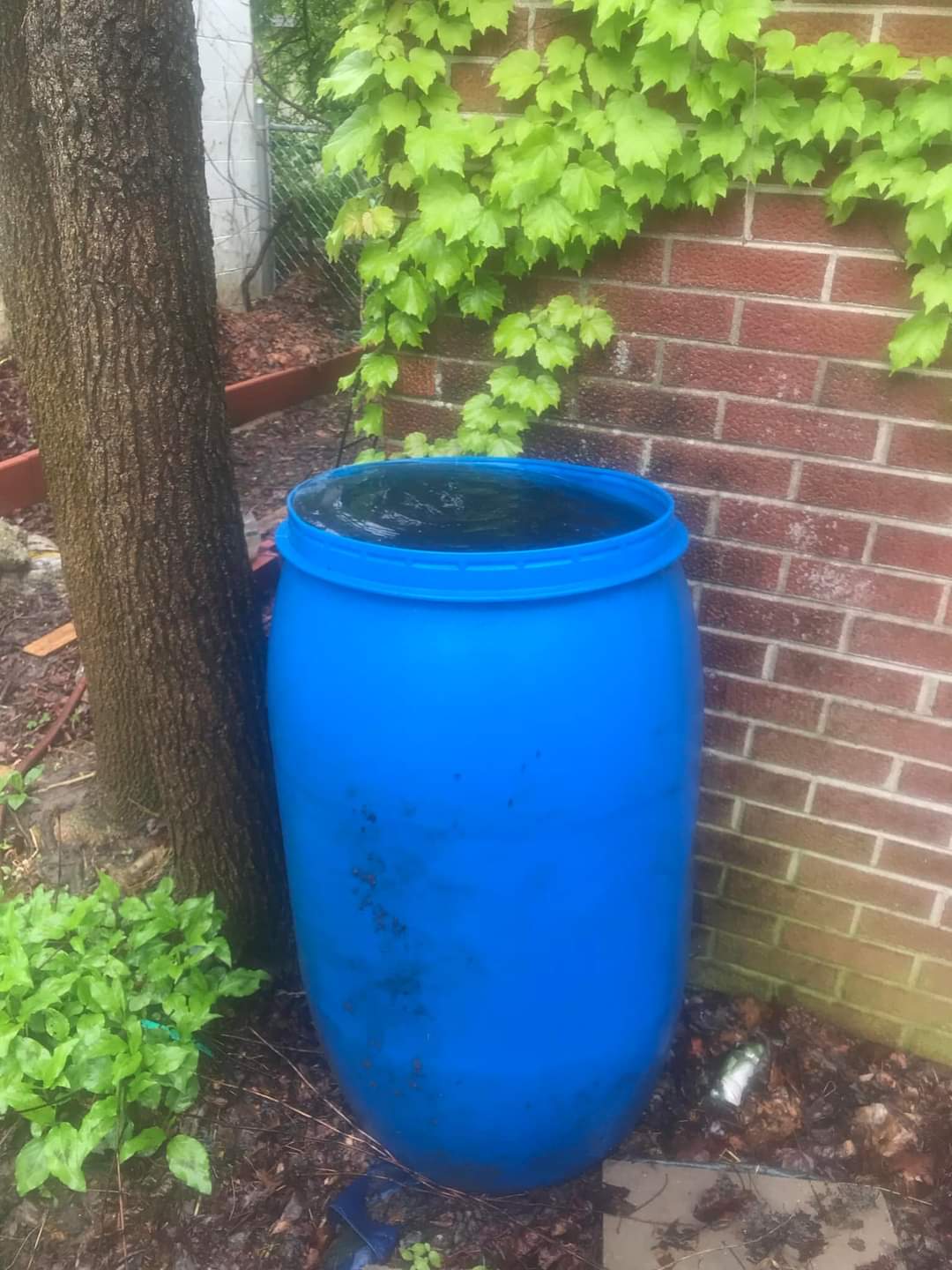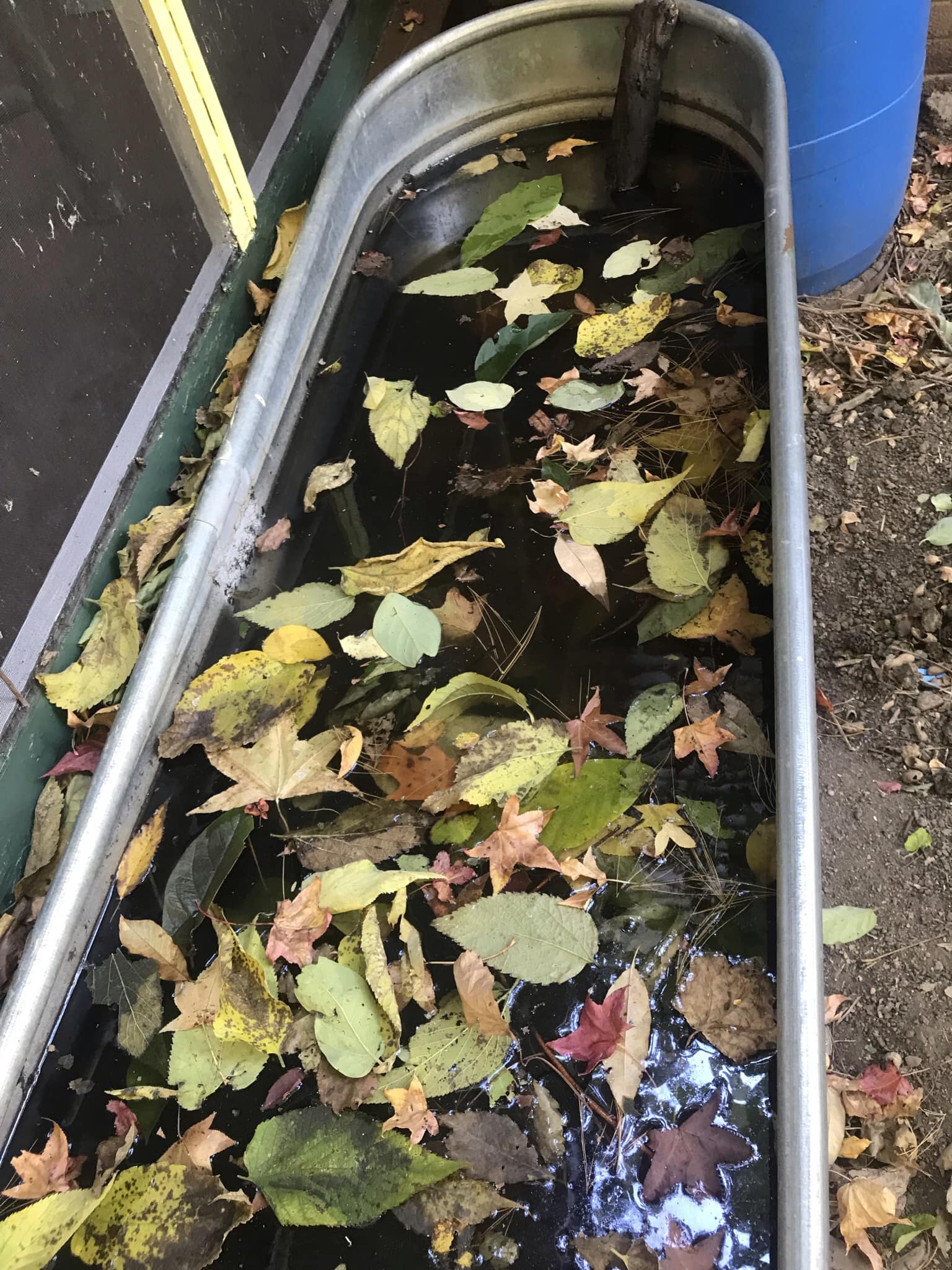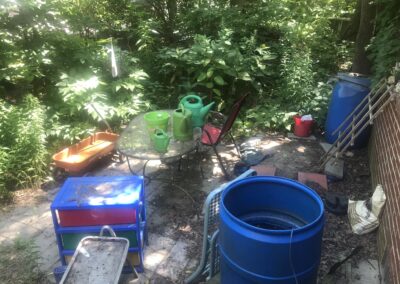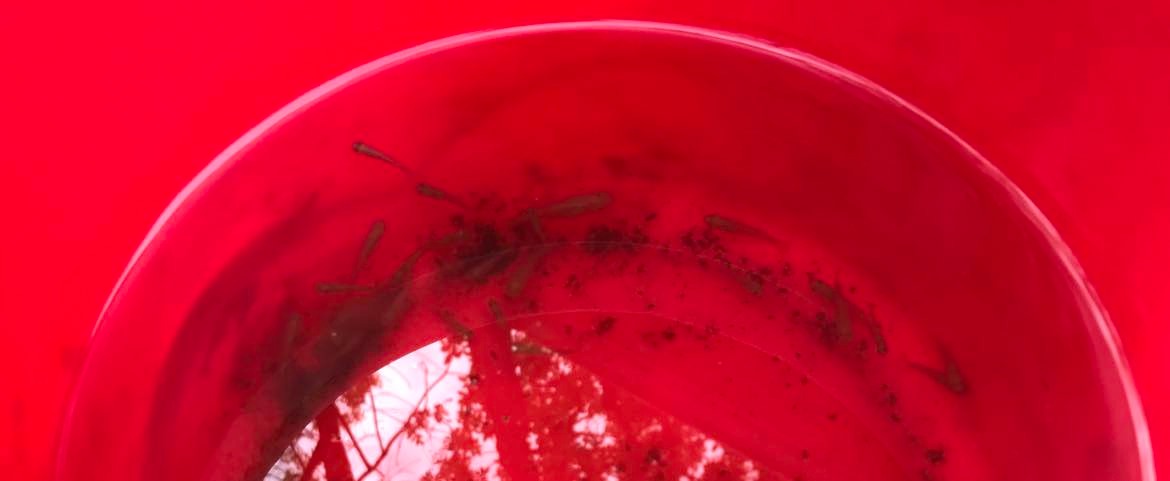RAINWATER MANAGEMENT
Perils of Improper Rainwater Management
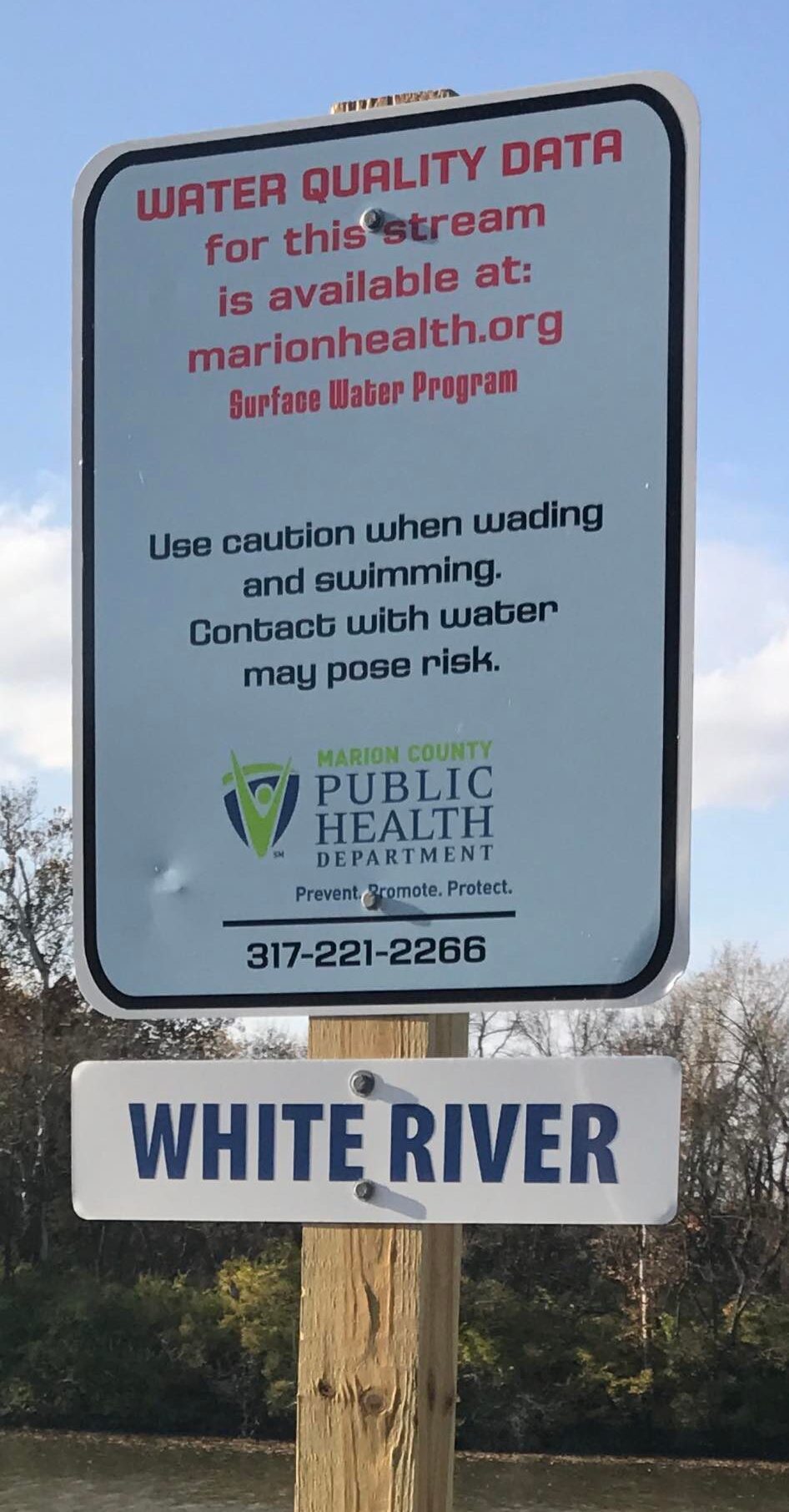
The rain that falls on healthy soil is absorbed into the ground, where plant roots access it. Water runoff in place of soil infiltration disrupts the natural hydrologic cycle of the earth. If the soil drainage is inadequate, some of the rain water runs off the ground surface and enters storm drains. Whereas Indiana creeks once served the drainage purpose in Nature, through engineering and development many urban streams have been covered over or are no longer functional. Storm drains on streets have taken their place.
In Indianapolis, excessive stormwater drainage into the sewer system has grievously added to water pollution in the White River. The pollutants include fertilizers and pesticides. According to IndyStar.com, there are 87 billion gallons of stormwater pollution entering directly into the White River each year from city streets and yards in Indianapolis/Marion County. Increasing the rain storage capacity of your yard is an important part of solving this problem.
As part of a concerted effort to improve this situation, the City of Indianapolis provides a residential stormwater credit for sustainable practices such as using rain gardens, on-site stormwater storage, and vegetated filter strips. Code of Ordinances, Sec. 676-303.
Further information on the implementation of the ordinance can be found HERE. Also, check out the Stormwater Credit Manual to learn about eligibility and how to apply!
Tree Leaves and Phosphorous
Tree leaves contain phosphorous, a desirable plant nutrient but also a potential water pollutant. We regularly rake tree leaves from our street gutters back into the garden. The leaves decompose into the soil, rather than into public waterways. We notice earthworms from the garden eating leaves in the gutters, so we gently relocate them back onto the garden soil as well. Tree leaves are a delicacy food for earthworms.
Click HERE for more information about the importance of leaf management to the water supply!
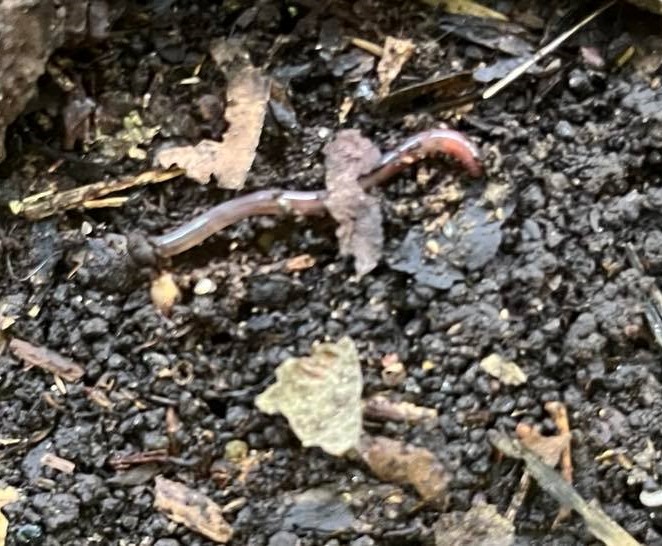
Benefits of Proper Rainwater Management

Rain drops fall from the sky, infiltrate into soil pores, or join a natural surface waterbody (creek, river, pond, lake). This H2O nourishes plants and animals before it evaporates back into the sky, where it completes the cycle by forming clouds and new rainfall. Rainwater is the most effective of all fertilizers. Keep your soil healthy with pores that absorb rainfall. Be sure to direct water from your roof to your garden beds, where it nourishes both plants and wildlife. If you don’t, precious rainfall will be wasted and go into the municipal sewer drain. Collect and store the stormwater before it runs off your property.
Further, as drought periods increase, keeping all rain water on site for later use is becoming more and more essential to garden sustainability.
Water overnight whenever possible!
Many heavy thunderstorms in our region take place overnight. Lightning adds nitrogen from the atmosphere into rain drops, which is how this crucial nutrient is delivered directly to plants on the ground. This is why night rain into a newly dug hole is a good planting strategy.
Sometimes, it is possible to time things perfectly, but the rest of the time, it is in our best interest to store rain for later use.
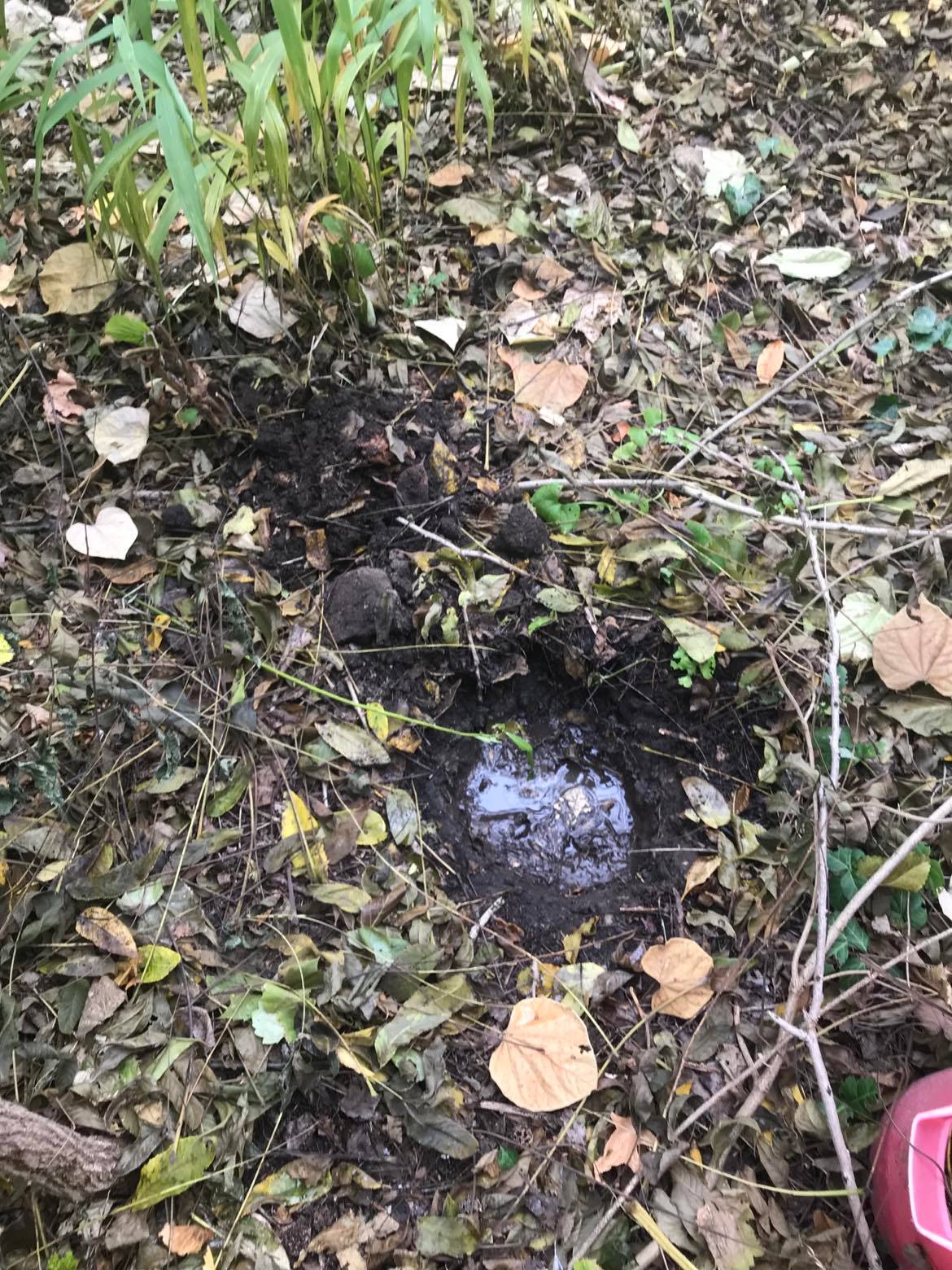
Rain Barrels
You can use a rain barrel to collect water from your downspouts, and smaller containers on concrete walks and patios to capture water as it falls. At Wildergarden, we collect rain water in buckets, pans and a wheel barrow. We use it promptly to water plants, being careful not to leave standing water for long. As you set up your own water storage system, be careful not to create a drowning hazard for wildlife or small children.
We got our iconic 50-gallon blue plastic barrels free from a local food grade oil distributor, so it never hurts to ask! If that doesn’t work for you, they can be purchased online or from your local home improvement store.
We also have livestock troughs that collect water. With fallen tree leaves, they brew leaf tea, which is especially nourishing to the plants. (Note that leaf tea is not intended for human consumption). Our rain water system is still evolving.
Note that while the use of rain barrels is both legal and encouraged in Indiana, this is not the case in other states or localities for various reasons. Click HERE to review the status of your state or to learn more about the State of Indiana’s rain barrel guidance!
Watering Area
The difference between a managed urban forest and a wild forest is that we can step in to assist any plants that need a little extra help! This is a necessity for any herbaceous plants or trees that we deliberately introduce to the land.
We use a well-dipping style of removing water, rather than a faucet, and we keep a screen on top of the barrel when not in use. A patio area works very well as the staging area for watering.
Water for Wildlife

To support the well-being of your bird and small mammal community, be sure to include bird baths and water pans on the ground in your rain water plans.
Mosquito Management
Wildergarden is located in central Indiana, so mosquito control is a big concern during the summer! Goldfish and Mosquitofish can be great allies in this effort, as both species are voracious eaters and will gobble up mosquito larvae as quickly as they hatch. To keep the fish healthy, we use a water bubbler, and a water heater in the winter. Wildergarden has been host to both types of fish, and we have found them to be equally effective in controlling the mosquito population. We prefer goldfish, as the bright orange color makes them easier to see and manage. This is very cost-effective, as you can start off with small ones, as they grow very fast!
Important things to keep in mind when using fish for mosquito control:
- Neither species of fish should be introduced into natural waterways.
- Mosquitofish live for approximately a year, but goldfish can live for up to 15! If desired, both species can winter in indoors tanks.
- Covering the top of your barrel with a grate is necessary to protect your fish from hungry raccoons and other predators.
- Rain barrel water contains fish waste, a natural fertilizer.

